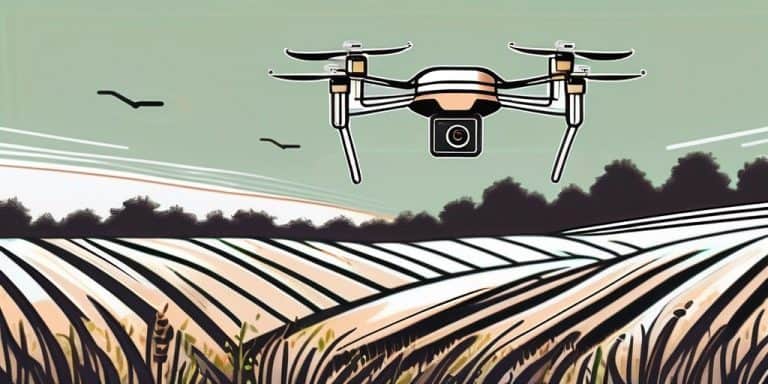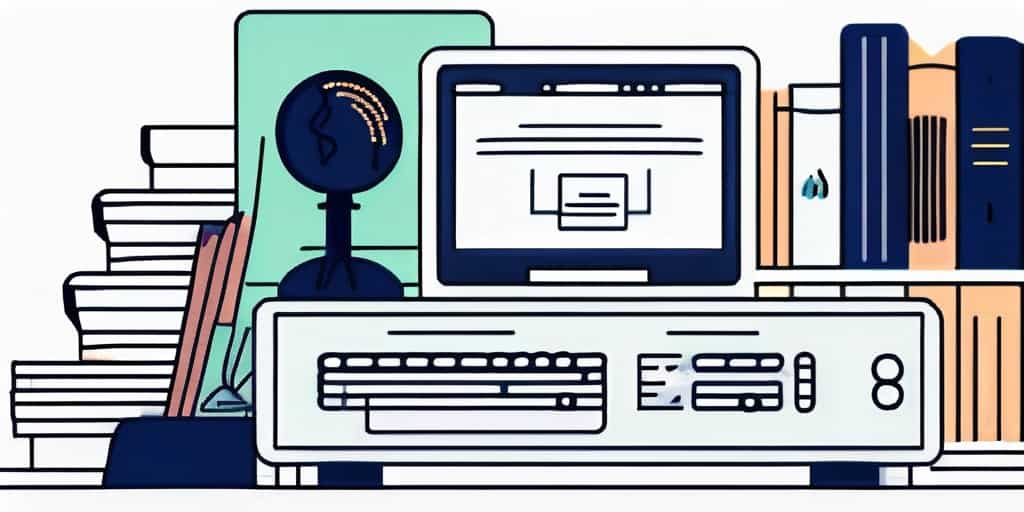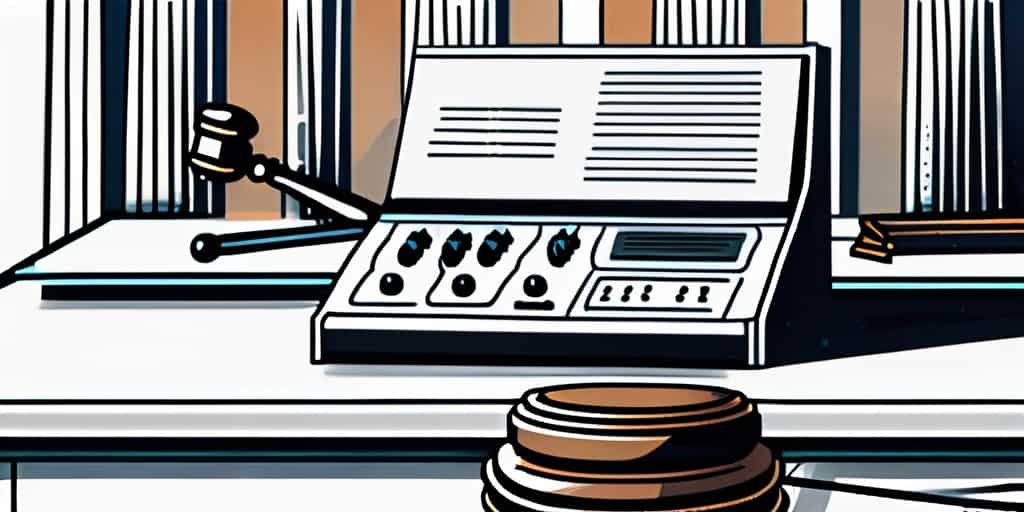
Examples of Speech Synthesis in Agriculture
Explore how speech synthesis technology is revolutionizing the agricultural industry with real-world examples and applications.

Speech synthesis, also known as text-to-speech technology, has become increasingly prevalent in various industries. One area where speech synthesis has found valuable applications is in the legal system. This article explores the different ways speech synthesis is utilized in the legal landscape, examining its understanding, intersection with law, implementation in courtrooms, and use in legal documentation. Furthermore, ethical considerations surrounding the use of speech synthesis in law will also be discussed.
Speech synthesis refers to the process of converting text into spoken words. By utilizing a combination of linguistic algorithms and audio processing, speech synthesis technology can generate natural-sounding speech. This technology has come a long way since its inception and continues to improve through advancements in artificial intelligence and machine learning.
Speech synthesis plays a crucial role in various applications, including assistive technology, language learning, and entertainment. It enables individuals with visual impairments to access written content by converting it into speech. Moreover, it facilitates language learning by providing learners with audio feedback and pronunciation practice. In the entertainment industry, speech synthesis is used to create voice-overs for movies, video games, and virtual assistants.
Speech synthesis is a technology that converts written text into audible speech. It utilizes a unique set of algorithms and linguistic rules to generate spoken words. Its primary function is to assist individuals who may have difficulty reading or comprehending written text. By converting text into speech, speech synthesis enables better accessibility and understanding for users.
Speech synthesis systems employ various techniques to ensure the accuracy and naturalness of the generated speech. These techniques include text analysis, phonetic transcription, prosody modeling, and voice synthesis. Text analysis involves breaking down the input text into smaller linguistic units, such as words and sentences. Phonetic transcription maps these linguistic units to their corresponding phonetic representations, ensuring proper pronunciation. Prosody modeling focuses on the rhythm, stress, and intonation of speech, making it sound more natural. Finally, voice synthesis combines all these elements to produce the final spoken output.
Speech synthesis has undergone significant evolution over the years, constantly improving in quality and naturalness. Early speech synthesis systems produced robotic and unnatural-sounding voices, often characterized by monotonous intonation. However, advancements in signal processing and machine learning have led to more realistic and human-like voices.
One of the major breakthroughs in speech synthesis technology was the development of concatenative synthesis. This approach involves stitching together pre-recorded speech segments to form complete utterances. By carefully selecting and concatenating these segments, the system can produce more natural-sounding speech. However, this method has limitations in terms of flexibility and expressiveness.
Modern speech synthesis systems now incorporate deep learning algorithms, which enhance voice quality and naturalness. These systems can replicate the nuances and prosody of human speech, allowing for a more engaging and immersive listening experience. Deep learning models, such as recurrent neural networks and generative adversarial networks, have revolutionized speech synthesis by capturing the complex patterns and dynamics of human speech.
Furthermore, the availability of large-scale speech datasets and powerful computing resources has contributed to the advancements in speech synthesis technology. These datasets enable the training of deep learning models on vast amounts of speech data, resulting in more accurate and expressive voice synthesis.
As speech synthesis technology continues to evolve, researchers are exploring new avenues to improve its capabilities. One area of focus is emotional speech synthesis, where the system can generate speech with different emotional tones, such as happiness, sadness, or anger. This has potential applications in virtual assistants, interactive storytelling, and therapeutic interventions.
In conclusion, speech synthesis technology has made significant strides in generating natural-sounding speech. Its applications range from accessibility and language learning to entertainment and beyond. With ongoing advancements in artificial intelligence and machine learning, speech synthesis is poised to become even more sophisticated, enhancing the way we communicate and interact with technology.
Speech synthesis has increasingly become intertwined with various legal processes. This section examines how speech synthesis plays a role in legal proceedings and the legal implications it entails.

In legal proceedings, speech synthesis technology aids in the presentation of evidence. It can convert written documents, such as witness statements or expert reports, into spoken words, making them accessible to judges, jurors, and other parties involved. This capability greatly enhances information comprehension and facilitates a more efficient and inclusive legal process.
Imagine a courtroom where a visually impaired individual is participating as a juror. Without speech synthesis technology, this individual would struggle to access written evidence, hindering their ability to fully participate in the legal proceedings. However, with the use of speech synthesis, the written documents can be transformed into spoken words, allowing the juror to engage with the evidence on an equal footing with their peers.
Moreover, speech synthesis can also be utilized during the presentation of arguments and legal submissions. Lawyers can use this technology to enhance their oral presentations, making their arguments more persuasive and engaging. By incorporating speech synthesis, legal professionals can effectively convey complex legal concepts to the judge and jury, ensuring a clear understanding of the case at hand.
While speech synthesis brings undeniable benefits to the legal system, it also raises certain legal considerations. For instance, the accuracy and reliability of the synthesized speech may be subject to scrutiny in court. As with any technology, there is always a possibility of errors or misinterpretations. Therefore, it becomes crucial for the courts to establish guidelines and standards to assess the accuracy and reliability of speech synthesis systems.
Another legal implication of speech synthesis is the admissibility of synthesized speech as evidence. Courts must determine whether synthesized speech holds the same weight as traditional forms of evidence, such as live testimony or written documents. This decision involves evaluating factors such as the technology’s track record, the expertise of the individuals involved in its development, and the potential for manipulation or tampering.
Furthermore, concerns regarding potential biases in speech synthesis technology must be addressed and evaluated within a legal framework. Just as human speakers can exhibit biases, there is a possibility that speech synthesis systems may unintentionally perpetuate or amplify existing biases. It becomes essential for the legal system to ensure that speech synthesis technology is fair, unbiased, and does not discriminate against any individual or group.
As speech synthesis technology continues to advance, it is crucial for lawmakers, legal professionals, and technologists to collaborate and develop comprehensive frameworks that address the legal implications and challenges that arise. By doing so, we can harness the potential of speech synthesis to improve access to justice, enhance legal proceedings, and ensure a fair and inclusive legal system for all.
Courtrooms are one area where speech synthesis technology has made notable contributions. This section explores how speech synthesis assists in evidence presentation and facilitates communication for non-English speakers.
In courtrooms, speech synthesis enables the presentation of written evidence in an auditory format. This eliminates the need for individuals to read lengthy documents and helps maintain focus during legal proceedings. By listening to synthesized speech, judges and jurors can better absorb and evaluate the information presented, leading to more informed decision-making.
Speech synthesis technology also plays a vital role in ensuring effective communication between non-English speakers and the legal system. By providing real-time translation services, speech synthesis helps bridge language barriers, allowing non-English speakers to understand and participate in court proceedings. This enhances accessibility and ensures equal treatment for individuals, regardless of their language proficiency.
Aside from its application in courtrooms, speech synthesis finds utility in the realm of legal documentation. This section delves into how speech synthesis simplifies legal jargon and enhances the accessibility of legal documents.

Legal documents are notorious for their complex and convoluted language. By utilizing speech synthesis, legal professionals can convert legal texts into spoken words, making them more understandable for the general public. This feature enhances access to legal information and empowers individuals to better comprehend their rights and obligations.
Speech synthesis also enables people with visual impairments to access legal documents more easily. Through assistive technologies like screen readers, individuals can listen to synthesized speech versions of legal texts, granting them greater independence and inclusivity in their interaction with the legal system.
While speech synthesis offers numerous benefits, it is crucial to address the ethical considerations surrounding its use in the legal system. This section explores privacy concerns and issues related to accuracy and reliability.

The use of speech synthesis raises concerns about the security and privacy of individuals’ personal data. As speech synthesis often relies on voice recording and data storage, it is essential to implement robust privacy measures to protect confidential information and mitigate potential risks.
Ensuring the accuracy and reliability of synthesized speech is paramount, particularly in the legal context. Any discrepancies or inaccuracies in the synthesized speech could undermine the integrity of legal proceedings. To uphold fairness and trust, continuous evaluation, and improvement of speech synthesis systems should be emphasized.
In conclusion, speech synthesis has established a significant presence within the legal system. Its applications range from improving accessibility in courtrooms to simplifying legal documents. However, the use of speech synthesis in law requires careful consideration of legal implications and adherence to ethical guidelines. By striking a balance between innovation and ethical responsibility, speech synthesis can continue to revolutionize and enhance the legal landscape.



Explore how speech synthesis technology is revolutionizing the agricultural industry with real-world examples and applications.

Explore how speech synthesis technology is revolutionizing the manufacturing industry with real-world examples.

Explore how speech synthesis technology is revolutionizing customer service with real-life examples.
